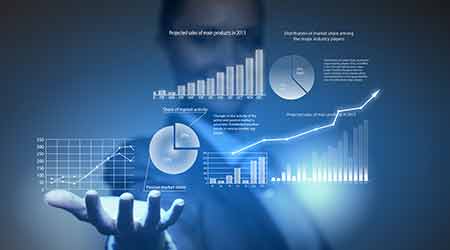« Back to Facilities Management Building Automation Category Home
3 Things Building Analytics Should Do for Building Systems
August 31, 2018
- Building Automation
By Jon Schoenfeld
Technological advances in commercial buildings have hit a tipping point where “analytics” is on the edge of everyone’s tongue. Initial pilot projects are achieving the results they’ve been promising and developers are improving algorithms at faster rates all the time. As with other industries, analytics can be used in myriad ways for various stakeholders within different organizations.
In the buildings space — from malls and mixed-use community developments to hospitals, university campuses, and commercial high rises — there are specific advantages that building analytics can provide to different interest groups, if you know what you should be getting out of the system.
As more people look to dip their toes into these open waters it’s important to have a clear understanding of what an analytics effort can and should do for owners, operators and managers. From our experience on the development and implementation side of building analytics, here are the top three things we think building analytics should do for building owners and facility managers:
1. Increase the lifespan of your building automation systems and mechanical equipment
So you’ve just completed a building retrofit or you’re considering one — how long do you think it will be until something in the system gets out of whack? Becomes out of date? Fails? Protecting your investment requires what’s known as continuous commissioning, where you’re constantly tweaking, updating, or troubleshooting the system to avoid major overhauls in the not-so-distant future. Continuous commissioning can be overlooked or willfully ignored because dispatching a technician to a building can become a large and unwanted expense on your balance sheet. A smart and secure analytics program can offer ways to remotely troubleshoot the issues it finds. Analytics can also narrow down the list of issues by identifying severity as the system reports the issue to you. Which brings us to thing number two, analytics should…
2. Provide direction on top priorities for maintenance, comfort adjustments, and energy-saving
It’s safe to assume that at any given time something in your building isn’t operating as optimally as it could. When analytics are introduced to a system, it quickly becomes clear that lots of somethings are not working properly. Addressing each issue one by one could take forever or eat up a budget before any meaningful changes can be made. Advanced building analytics should narrow down the alerts to just those that are critical. “Critical issues” are different for every building and the analytics program should be nimble enough to adapt. Some factors analytics systems may use in determining the severity of an issue could be how long the issue has been occurring, how much it’s costing, or what area of the building it affects.
3. Get the info to those who are most suited to act on it
Analytics programs should know what issues are priority to you. As just mentioned — and as you well know — there are always problems to be found in a building but there are limited resources to address every little thing. On the whole, correcting certain issues will affect more positive change than others. Analytics can help identify those “priority” issues. For best results, reports on those issues should inform only the person who is best suited to handle it while also providing an explanation of the issue and some direction on how to fix it.
Jon Schoenfeld is director of energy and analytics for Kodaro. Schoenfeld has been an engineer in the renewable energy and energy efficiency fields for more than 15 years.








